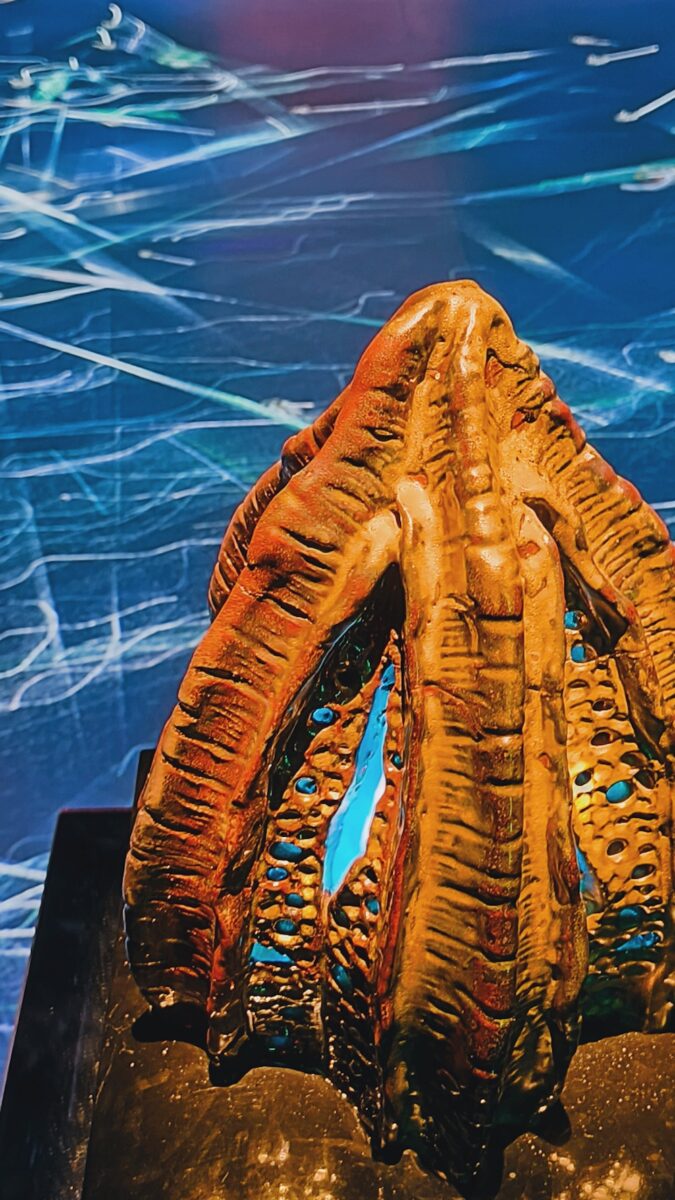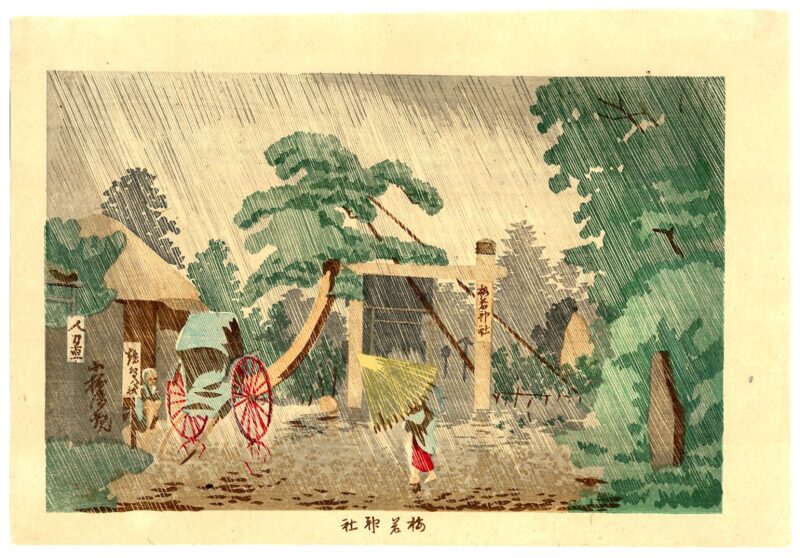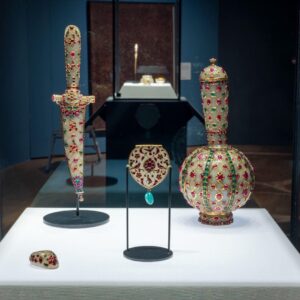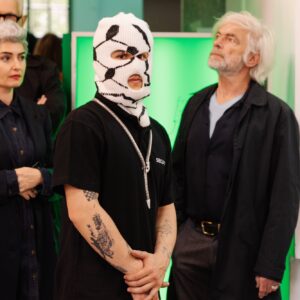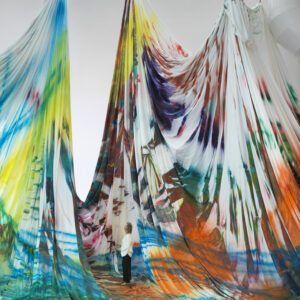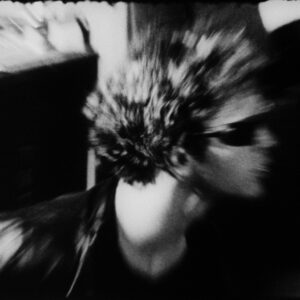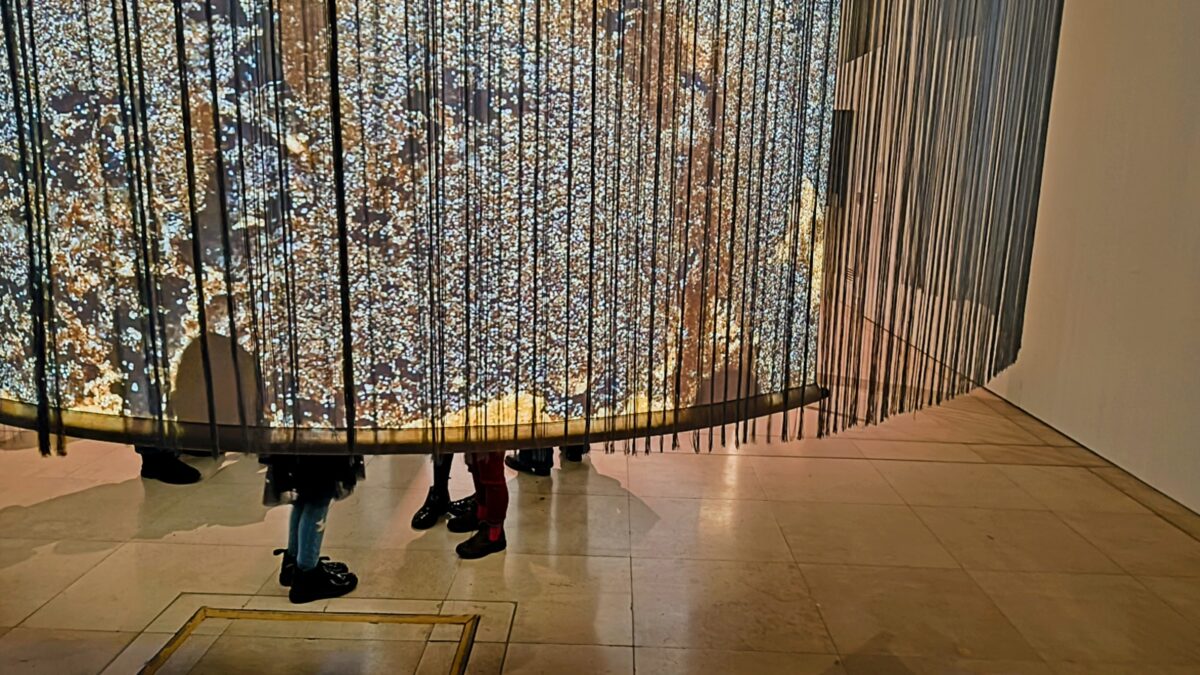
For the last three months fungi, worms and weeds took centre stage at Somerset House alongside microbes and bacteria. Made visible and audible by artists, architects, designers and makers who collaborated with each other, with materials and organisms, and with all kinds of scientists – ecologists and biologists, horticulturalists and entomologists, historians, prehistorians and archaeologists, computer scientists and technologists, proving that soil truly is connected to everything.
SOIL: The World at our Feet could rather fittingly be reached via the less glamorous back entrance from Embankment level, and displayed across the windowless lower galleries. When the show first opened in January, the days were short and the flower beds in Embankment Gardens still bare. Since then nature has done its magic with signs of life pushing through the surface and transforming the streets of London into a wonderworld of blossom and new beginnings.

The exhibition in itself acted as an example of what a healthy relationship between humans and nature can look like, starting with the collaborative curation shared by design historian Claire Catteral, food researcher May Rosenthal Sloan and horticulturists The Land Gardeners. Their selection is thoughtful and optimistic despite the complex with references to the need for collaboration and cooperation, reciprocity and interspecies communication the overriding message.
Activist terminology linking economic globalisation, land appropriation and commercial exploitation with a loss of biodiversity and effects on climate appeared throughout without overpowering the aesthetic appeal of the displays. Visitors were given a choice to whether they wished to be confronted with uncomfortable truths. Two rooms carried a trigger warning, one for referencing colonisation and conflict in a film about Palestine, the other for showing a dying horse surrounded by plastic waste.
A personal favourite was Eve Tagny’s research documentary into the history of the rose. In her 40-minute video ‘Of Roses’ the artist links many aspects of what is expressed individually by other artists in the show. Even though the origins of the ultimate symbol of Englishness can be traced back to the Middle East and China, the roses’ disputed heritage was erased with their being renamed in Latin. The attribution of flower characteristics to women and the particular obsession with the rose are described as a means of patriarchal control and coercion, while colonial exploitation continues with roses mass produced in rose factories in Kenya and moved across continents, further contributing to wealth inequality and environmental problems. Colonialism, capitalism and feminism all linked in the name of the rose.
It is impossible to walk through the exhibits and not learn something new. Did you know that all living organisms produce an electrical current? Examples include the sound made by cactus roots feeding from the ground made audible in Michael Allen Z Prime’s installation, and recordings of electrogenic bacteria turned into The Singing Compost by Harun Morrison and Paul Granjon. Digital is not the sworn enemy at SOIL, indeed some of the most successful contributions rely on technology, not least Marshmallow Laser Feast’s impressive interactive underground world of mushrooms.
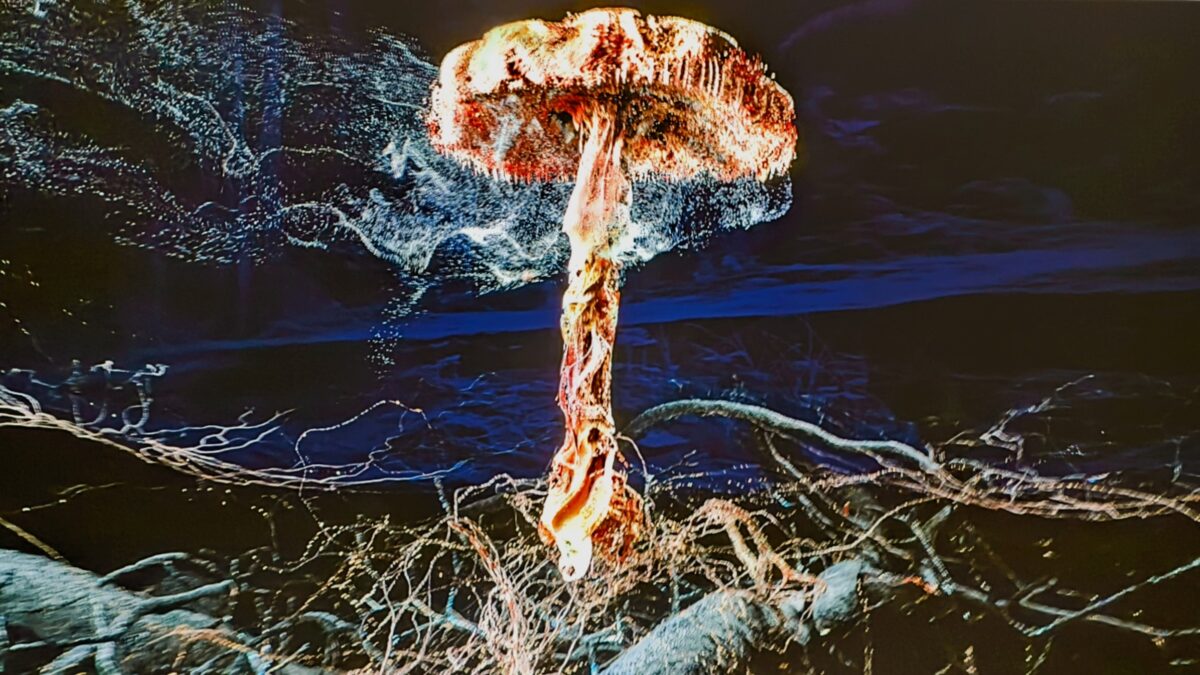
Miranda Whall listens to the earth speaking and translates data from a soil sensor network into meticulous analogue drawings made with thousands of pinpricks. What started as a material archive for Kim Norton’s ceramic practice has evolved into a Soil Library that maps more than 100 soils across various locations. Joana Hadjithomas and Khalil Joreige describe the core samples collected from Athens, Beirut and Paris as a subterranean world created by constant cycles of destruction and reconstruction of civilisations past and present. Overall, there was less clay in SOIL than was on display during COLLECT, a fair for contemporary craft and design that briefly popped up in the upper galleries at the end of February.
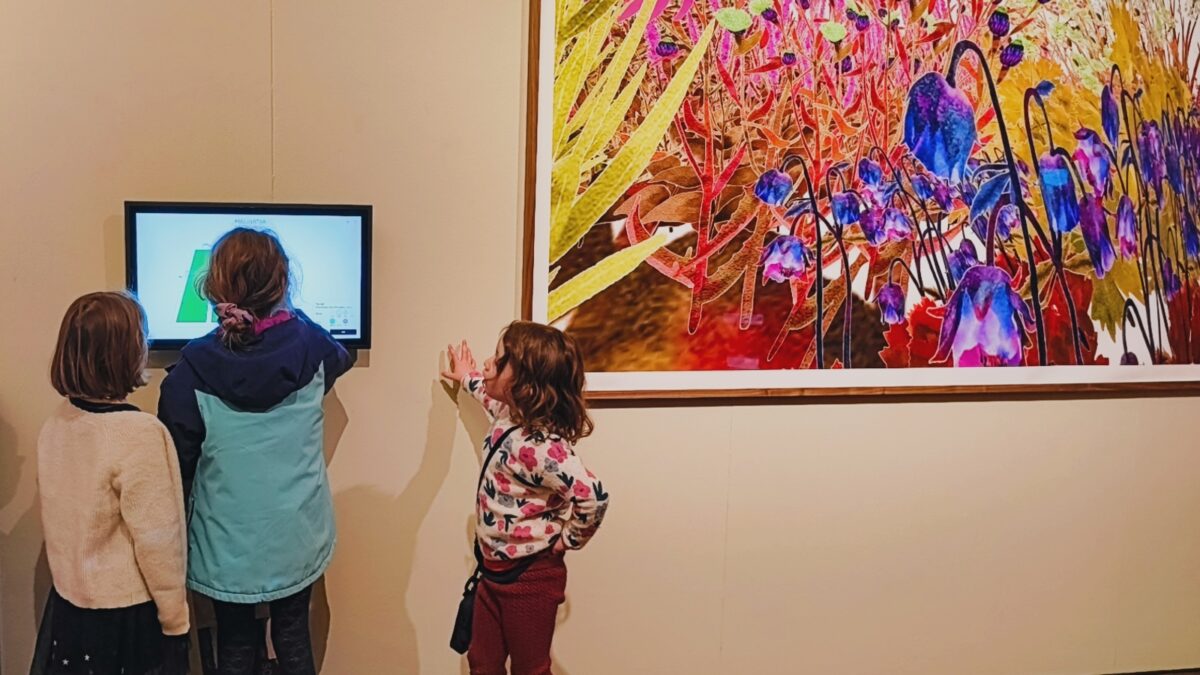
Visitors learnt that there is no basic starter kit for making your own soil, and that we’d better preserve what we have left. A red flag created by Freddie Yauner extended the exhibition from the cellars to the roof of Somerset House and sent a cautionary SOS to ‘Save Our Soil’. Something & Son invited visitors to explore, discuss and share recipes and hopes in their Soil Kitchen while Asad Raza developed a formula for creating “neosoil” from scratch using everyday materials. Unfortunately, neither followed through with an invitation to make mud pie or sand cake. Instead, children’s activities mainly involve screens or crayons and paper.
Successful art tends to elevate personal experience to express something universal. The Sweetmans are a perfect example. In 1974 the couple were photographed in their traditional cottage garden every month and are the undisputed stars of the show. With neither the photographer Ken Griffiths nor his subjects alive today, the images evoke a deep sense of nostalgia for a simpler life. What happened to their home, who is tending to their garden now?
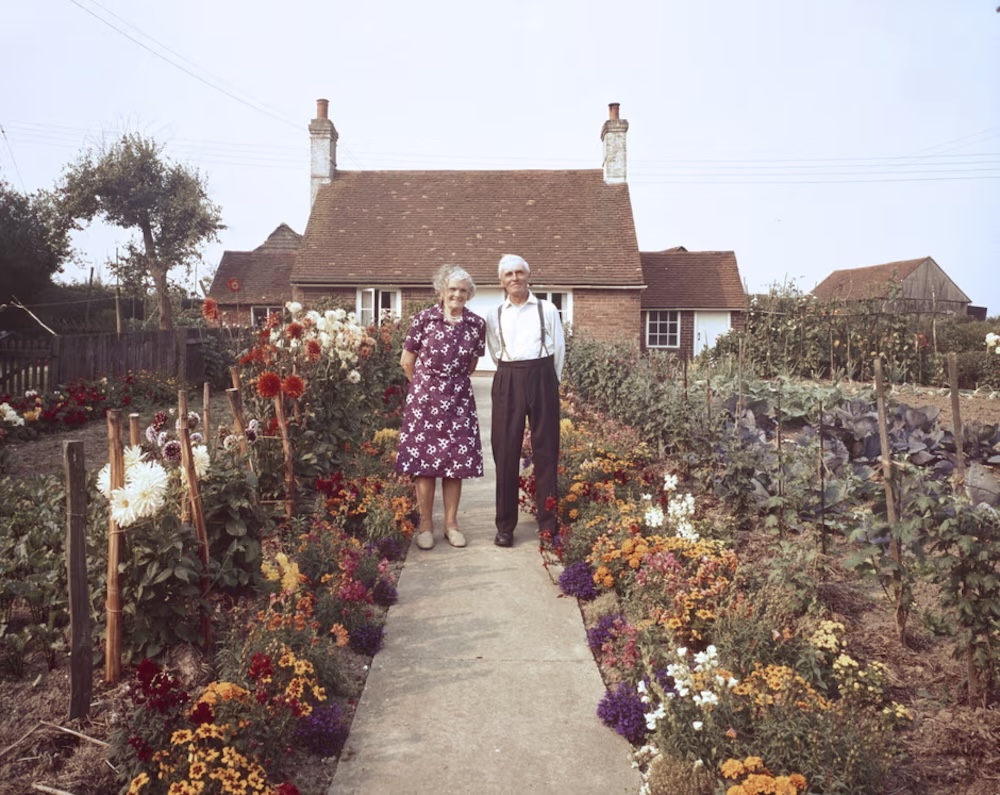
Greek-Palestinian filmmaker Theo Panagopoulos stumbled across historic footage of wildflower meadows in the Palestine of his grandparents, a world that no longer exists. The re-edited film draws parallels between the Scottish missionaries who settled in Palestine in the 1930s and ‘40s, the local population, and their shared love of the flowers. A gentle yet powerful act of cultural reclamation. Elsewhere in the exhibition Vivien Sansour and Neville Wisdom present the Palestine Heirloom Seed Library looked after by volunteers across the United States.
Barbadian artist Annalee Davis talked about ecological practices of resistance and historical reclamation at a Serpentine event last year. Good to see two of her works at SOIL, one particularly poignant in illustrating the complexities of plantation colonialism and its deep rooted effects on land, plantlife and people. Historical ledgers from the sugar plantation she lives and works at are overlaid with paintings of sugar cane and delicate lace to represent her parents. Entangled roots and loose threads link the bloody legacy of the past with the ongoing suffocation of our planet.
Somerset House is one of several cultural institutions celebrating noteworthy anniversaries this year. Until it was refurbished and reopened to the public in the year 2000, the former palace was repurposed as offices for the Inland Revenue. With shows like SOIL: The World at our Feet Somerset House expands the definition of culture, not just by inviting artists whose practice is centred around aspects of nature, soil and land. But by actively demonstrating that culture can no longer be defined as exclusively human intellectual achievement.
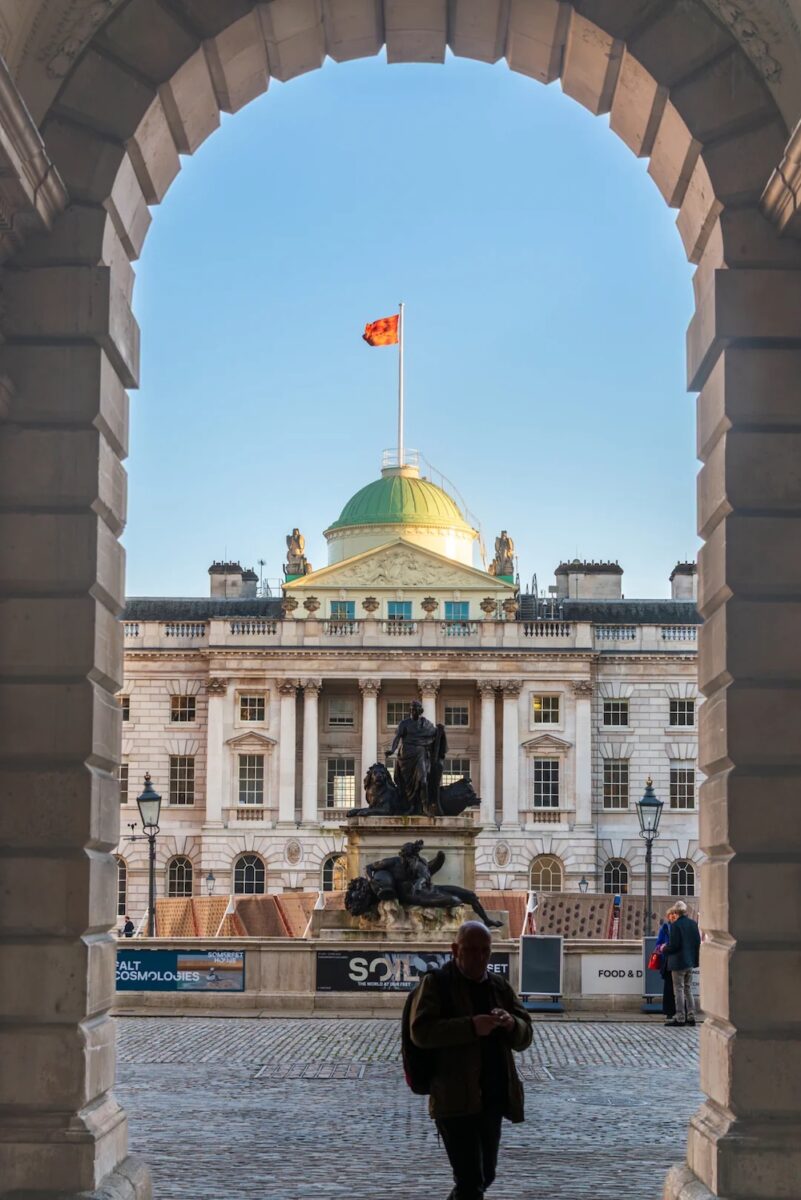
While Somerset House the institution does not have any direct links to colonialism, the building itself does, an aspect of which is addressed in a separate installation by Himali Singh Soin & David Soin Tapeser. In the courtyard the artist duo reinterpreted a monumental hedge installed by the British in India to maintain imperial salt monopoly during colonial rule.
The courtyard installation is complemented by AI-generated reproductions of what the Inland Customs Line may have looked like, alongside salt-printed archive photographs and an immersive soundscape leading down a previously closed off staircase that links the former Salt Office on ground level with the storage area below – explaining the lack of windows. The wall texts fairly neutrally describe the Salt Office as a symbol of Britain’s growing bureaucratic structure to end previously unregulated trade and movement, and the exhibition provides merely a glimpse of the might of the East India Company. I look forward to the next chapter of hidden histories unravelled by artists as cultural institutions continue to tackle their colonial heritage.
SOIL: The World at our Feet closed on 15th April, Salt Cosmologies continues until 27th April.
